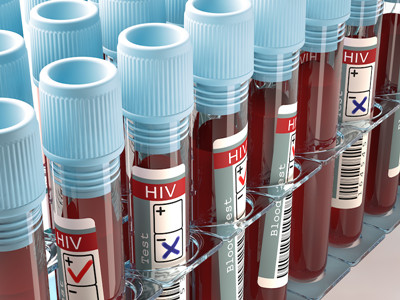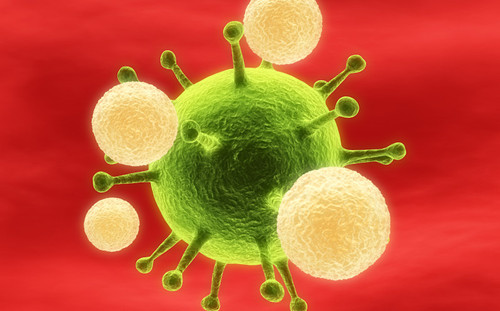Curing HIV in 2020? Count 4 of the most promising HIV therapies May 09, 2018 Source: Sina Pharmaceutical Since the first discovery in the early 1980s, HIV research has come a long way. Antiretroviral therapy is hailed as a major milestone in the clinical treatment of HIV, which has changed the lives of millions of people around the world. But the current research goal is to find a way to cure HIV by 2020. Ten years ago, Timothy Ray Brown, a young American man living in Berlin, was successfully cured after a bone marrow transplant and became the first AIDS patient to be cured in the world. It turns out that there is a rare mutation in the bone marrow donor called CCR5-delta32. After receiving the transplant, Brown was resistant to the HIV virus and no longer needed antiretroviral treatment after transplantation. When this case was reported at the time, the entire medical community was crazy. But did we finally cure HIV? Unfortunately, the answer is still "not yet". The cases that were attempted to replicate were not successful, and the harsh procedures of bone marrow transplantation also pose a high risk for HIV-positive patients. The improvement of antiretroviral drugs and the development of HIV vaccines are still continuing, but HIV curative treatments are still difficult to reach. Recently, the well-known European life science website issued a document stating that some organizations are actively promoting the development of HIV functional cure therapy. Functional cure is the practice of letting HIV-bearing individuals live healthy without the need for medication, without having to completely eliminate the virus in the body. The following is the latest development of HIV functional cure therapy listed by labiotech. 1 , blocking virus replication One of the most advanced methods of HIV treatment is to inhibit the ability of the virus to replicate RNA and produce more copies. A similar approach is commonly used to treat herpes infections, although it does not completely eliminate the virus, but it can prevent the spread of herpes. At the end of last year, a clinical study by French biotechnology company Abivax showed that the company's drug ABX464 is expected to become a functional therapy for HIV. Its key potential is to target HIV that is inactive in the intracellular virus reservoir. Current treatments inhibit the viral load in the circulatory system by inhibiting the formation of new viruses and do not touch the viruses in the virus repositories. Once treatment is stopped, the HIV virus will come back in 10-14 days. ABX464 is the first drug candidate ever to reduce the viral repository. ABX464 binds to specific sequences in HIV viral RNA and inhibits viral replication. In the Phase IIa clinical study, patients received antiretroviral therapy while receiving ABX464. Data showed that 8 of 15 patients had a 25-50% reduction in viral stocks after 28 days of treatment. There was no reduction in viral stocks in patients receiving only antiretroviral drugs. Currently, the company is planning a phase IIb clinical study to determine the long-term effects of the drug. The study plans to follow up to 200 patients for 6-9 months to find the maximum reduction in the virus reservoir and the time to achieve this effect. Abivax expects ABX464 to enter Phase III clinical studies in the first half of 2020. 2 , Shock & Kill Another increasingly popular HIV therapy is also targeting hidden HIV virus libraries. This “shock & kill†or “kick & kill†method uses a latent reversal agent to activate or break down the latent HIV virus library, making the standard Antiretroviral therapy can kill these viruses. In 2016, a report from a British university reported that all patients with HIV disappeared after treatment with this method. But the researchers warned that these are only preliminary results. It is expected that 50 patients will participate in the experiment later this year. Currently, Norwegian biotechnology company Bionor is testing a similar strategy using a double-effect vaccine, one of which stimulates antibody production, blocks HIV replication, and the other attacks the virus reservoir. So far, this method has not proven its potential. Last year, the fastest Ib/IIa study using this strategy showed that although it helped manage HIV infection, it did not reduce the HIV virus stockpile. A recent study showed that currently available LLAs can only activate less than 5% of HIV virus repositories. 3 , immunotherapy HIV is so dangerous because it attacks the immune system and protects individuals from infection. But if you can enhance the function of immune cells, will the outcome be different? This is the truth behind immunotherapy. Last year, researchers in Oxford and Barcelona reported that in a clinical study, after receiving immunotherapy, 5 of 15 patients were treated with antiretroviral drugs, 7 months later. The HIV virus disappears because immunotherapy enhances the immune system's ability to withstand viruses. In this study, the researchers used a method that combined a drug to activate a hidden HIV virus reservoir, while using a vaccine triggered an immune response that was thousands of times stronger than normal. Although their findings suggest that immunotherapy is effective against HIV, these results remain to be confirmed, and what causes some of them to respond, while others do not. Bill Gates has also been supporting the development of HIV immunotherapy. One of the companies he invested in is Immunocore, which has designed a T-cell receptor that can find and bind HIV while guiding T cell killing. HIV-infected cells, even if HIV levels are very low. This method has been shown to work in human tissue samples, and the next step is to confirm whether it is effective for HIV carriers. One of the fastest-growing immunotherapies is the vaccine VAC-3S developed by InnaVirVax of France, which stimulates the production of antibodies against the HIV protein 3S, allowing T cells to attack the virus. This approach is completely different from other vaccines, allowing the immune system to better recognize and destroy the virus by promoting immune function recovery. After completing Phase IIa testing, InnaVirVax is testing a DNA vaccine from VAC-3S in conjunction with Finish FIT, which is expected to achieve a functional cure. 4 , gene therapy It is estimated that about 1% of people worldwide have natural immunity to HIV because of a genetic mutation in the gene encoding CCR5. CCR5 is a protein on the surface of immune cells through which HIV enters cells and infects. Individuals with mutations in the CCR5 gene lack a portion of the CCR5 protein that prevents HIV from binding to it. Using gene therapy theoretically it is possible to edit DNA and introduce this mutation to stop HIV. Sangamo Therapeutics of the United States is the fastest in this approach. The company extracts the patient's immune cells and uses zinc finger nucleases to edit the DNA to make it resistant to HIV. In the 2016 report, the company said that in a phase II clinical study, four of the nine patients who received this gene therapy in a cohort were able to remain antiretroviral-free and did not detect HIV. The full results are expected to be announced by the end of this year. Future HIV gene therapy can be done using CRISPR, which is easier and faster than other gene editing tools. In in vitro studies, CRISPR has demonstrated the potential for HIV cure. How far is it to cure HIV? Although several methods are expected to lead to functional cure therapies, the biggest focus around any HIV therapy is the ability of the virus to rapidly mutate and develop resistance, and for these new methods, there is no virus that can mutate or evade treatment. The data. So far, these functional therapies have not yet reached the late clinical stage. This means that it seems impossible to achieve the goal of 2020 to cure HIV. However, 2020 is likely to be an important milestone, as the first post-clinical studies will be launched in 2020 and, if successful, will bring the first functional cure in the next 10 years. (Sina Pharmaceutical Compilation/newborn) Article reference source: An HIV Cure by 2020? A Review of the Future of HIV Therapy Moisturizing is the foundation of skin care. The basic skin care products that are indispensable for moisturizing and hydrating such as lotions, lotions and essences, how in the end should I choose the real moisturizing products? The easiest way is to look at the active ingredients of the product. Common Cosmetic Ingredients series, common moisturizing ingredients, let's take a look. Moisturizing Raw Materials,Nourishing Skin,Aloe Vera Gel Powder Shaanxi Zhongyi Kangjian Biotechnology Co.,Ltd , https://www.zhongyibiotech.com



1, glycerin, the scientific name of propanetriol, glycerin can be classified as a natural ingredient moisturizer, mild texture, not easy to cause skin allergies, etc.. But glycerin itself is only moisturizing and no skin care function, so it works well for young, healthy skin. If the skin needs multifaceted maintenance, then the maintenance products also need to contain other effective ingredients and glycerin with the use.
2, collagen, collagen on the skin care although important, but its due to the molecular large, directly applied when not accepted by the skin. The real improvement of the skin collagen content is the use of collagen boosters, such as vitamin C, vitamin B3, vitamin A.
3, hydrolyzed collagen, hydrolyzed collagen is the large molecule of collagen to hydrolyze the processing into a small molecular weight of protein. The hydrolyzed protein is not as good as other moisturizers in terms of pure moisturizing effect, but has a certain function of improving skin texture. When you are shopping, make sure that the collagen in the maintenance products is labeled "hydrolyzed collagen", which is the collagen that can be absorbed by the skin. The actual fact is that you can find a lot of people who are not able to get a good deal on this kind of things.
4, amino acids, amino acid moisturizing mechanism and other moisturizers are different, it does not have a strong water absorption, but the skin moisture has a regulatory role, because the moisture content in the stratum corneum is reduced, the amino acid content at the same time reduced, so the maintenance products in the addition of amino acids is necessary to maintain the normalization of keratin function, but amino acids do not belong to the "main moisturizing factor "The main factor is the fact that it is not the main moisturizing factor.
5, natural moisturizing factor, the main components of natural moisturizing factor are amino acids, sodium lactate, urea, etc.. In pure moisturizing effect is not as good as glycerin, but because of its good skin-friendly, can regulate the skin pH function and maintain the normal operation of the keratin, not only has a moisturizing function, but also a certain maintenance function, is also indispensable moisturizing ingredients.